Tender: Jesse Glazzard’s new fashion zine explores queer joy

Photographer Jesse Glazzard and stylist Nathan Henry’s new zine is empowering the trans and non-binary community through fashion.
Style
Words: Sophie Lou Wilson
Photography: Jesse Glazzard
“I think that tenderness is part of who I am,” says photographer Jesse Glazzard. “I see things in a romantic way.” This tenderness informed the making of Jesse’s latest zine – aptly titled Tender – a collaboration with stylist Nathan Henry and an endeavour to empower trans and non-binary people through fashion.
Tender is a word that is often used to describe Jesse’s work. This gentle emotion shines through once again in these photos. And tenderness makes way for joy; the joy of wearing clothes you love, the joy of gender euphoria, the joy of taking up space.
The project started after Jesse had an uncomfortable experience at a casting which made them want to create a body of work that was caring and collaborative from start to finish. Nathan then had conversations with all of the models that were cast where they discussed what they would ideally love to wear and if there was any styling that might make them feel dysphoric and would be an absolute no.
“People feel special and excited because they are wearing a designer that aligns with their personal style,” Jesse explains. “If you ask someone, ‘If you could wear anything, what would you wear?’ their choices are reflective of their identity.” This resulted in a vast array of fashion brands appearing throughout the pages; Charles Jeffrey, Kiko Kostadinov and Rick Owens, to name a few.
Jesse and Nathan wanted to create an environment where everyone felt comfortable communicating with them at each stage of the process. However, this approach on fashion sets is sadly not the norm as Jesse’s personal experience attests. While they think it’s important for queer and trans teams to be hired and paid for LGBTQ+ projects, Jesse also hopes to be seen as more than “just a queer trans artist. I’m an artist making work that aligns with me and the industry has chosen to label it as representation. Cis het creatives aren’t pinned down to one thing and I don’t want to be either.”
We caught up with Jesse and Nathan about Tender zine, fashion as empowerment, normalising trans+ representation and the tender approach they take to their work.
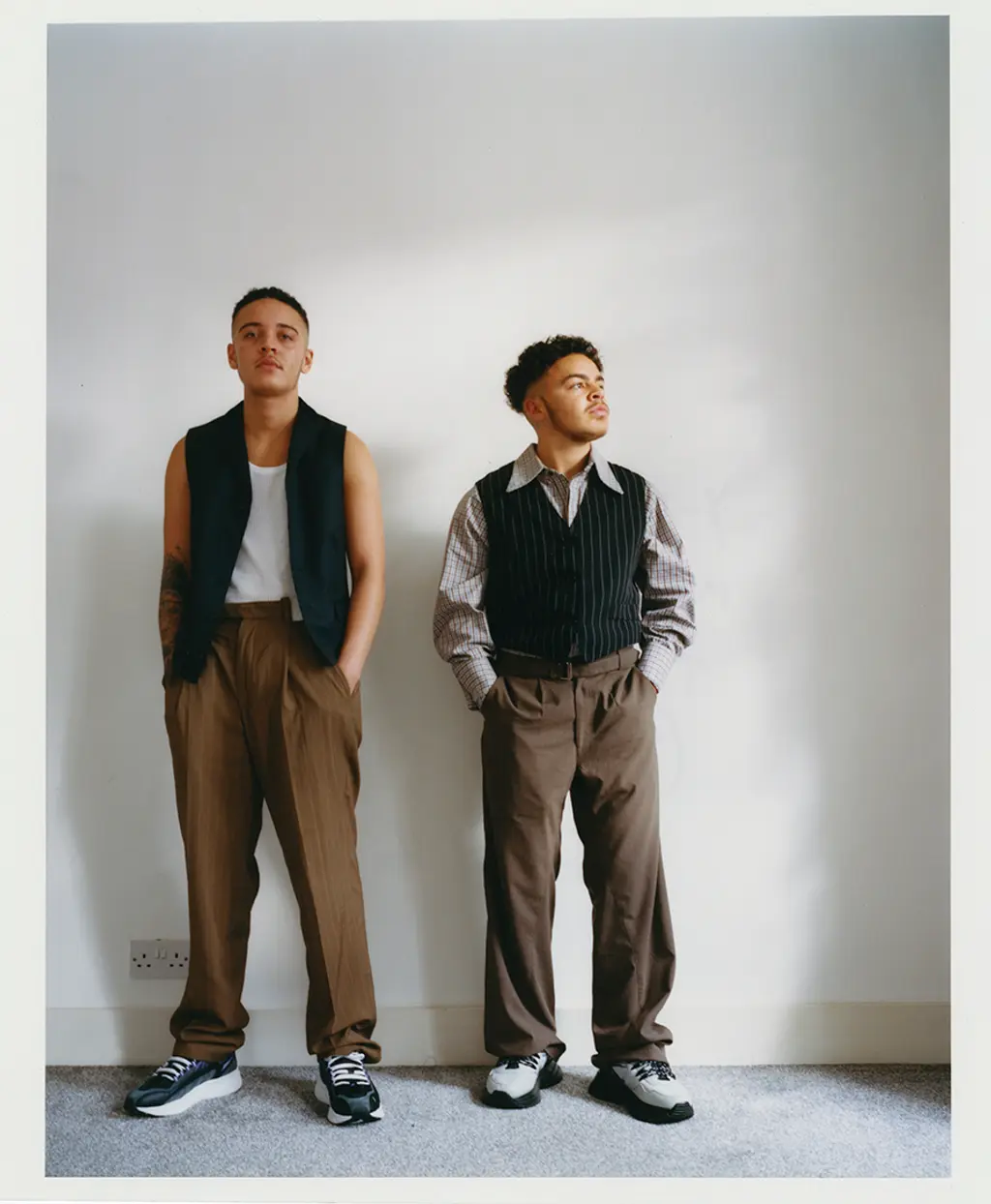
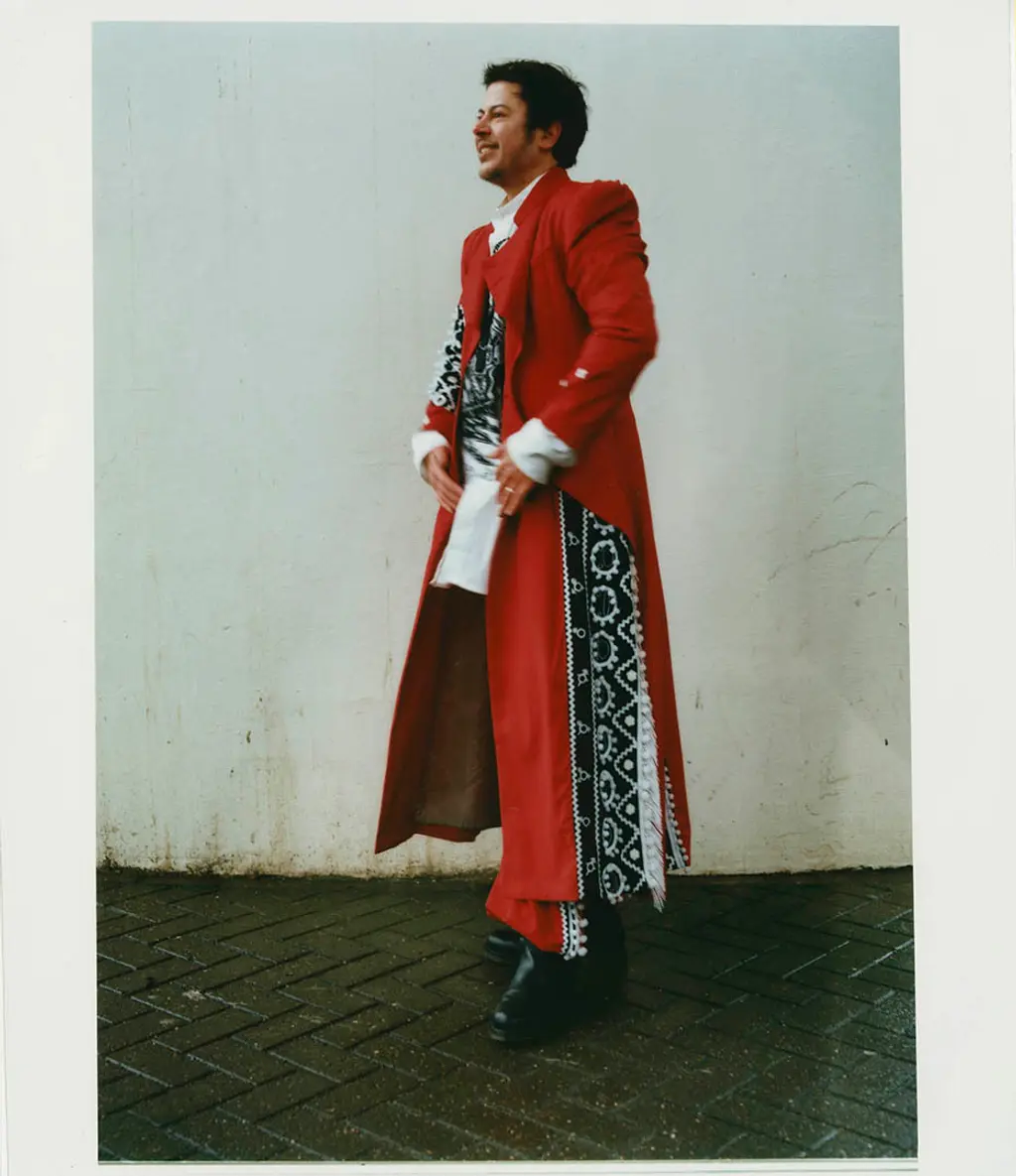
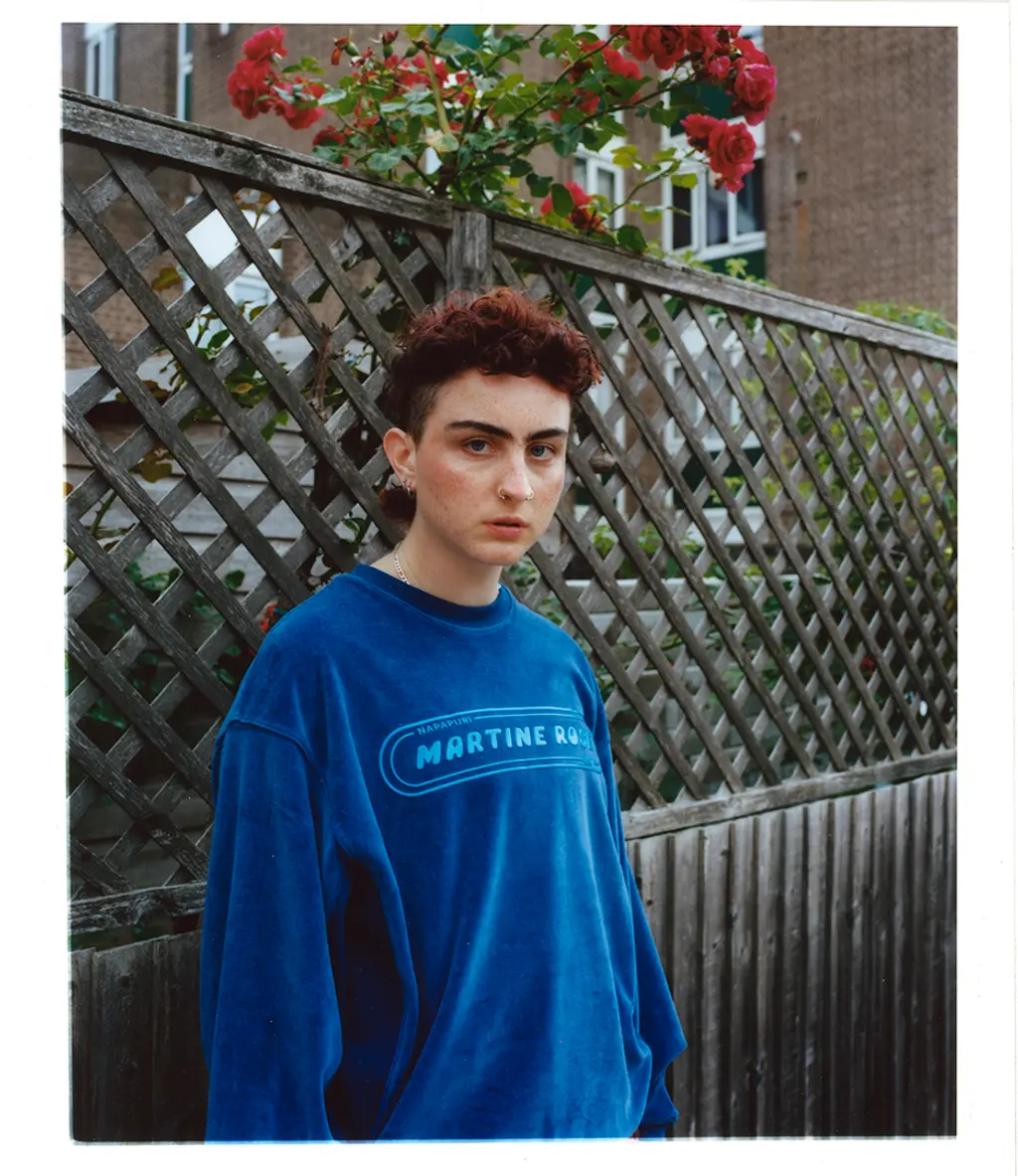
Why did you want to make this zine and what do these images mean to you?
Jesse: I wanted to make this zine as a body of work that is most aligned with me and that I could use to give back. These images mean a lot to me. They mean growth. They mean compassion. They mean we exist.
Nathan: One of my main focuses with this zine was to include trans and non-binary people in a fashion space in a way which felt appropriate to them. It felt important that it was handled by a team who was also a part of the same experience. It’s important to have trans photographers telling those stories. When Jesse approached me about the zine, the idea came about from conversations we had. We wanted to capture people in a genuine way on our own terms.
What was the process of making this zine?
Jesse: I started the zine around 10 months ago. I started it because I was pissed off at the way someone had treated me in a casting. It made me want to create something where we as trans+ people could feel comfortable and not disrespected. First, I started casting just my friends, then in the later stages of casting I used Instagram a lot which was where we found most of the models appearing in the zine. I also tried to cast people who were raising money for gender affirming surgeries or had other GoFundMe’s so they could benefit from the sales of the zine too. I paid models with my Universal Credit and the profits of the zine will be split between trans+ charities and gender affirming GoFundMe’s.

Can you tell me about the title, Tender? It’s a word people often use to describe your work. What does it mean to you?
Jesse: I decided on the word tender because that is how I approached these images. It was important to me to speak to all the people involved and make sure they were comfortable with how they were represented. That’s something that doesn’t really happen that much in fashion. Models are often regarded as an afterthought. But more than that, I think that tenderness is part of who I am. I see things in a romantic way and even platonic relationships I approach with romance. It’s how I like to approach my work. Every shoot I want to reflect the person I am working with in a way that is true to them. That’s the part that shines through my work. That’s tender.
You worked with brands including Givenchy, Loewe, Simone Rocha, and many more. How did you decide which brands to include and what do you think was the impact of working with designer brands as opposed to having models style themselves?
Nathan: I reached out to brands I thought would understand and appreciate where we were coming from, the stories we had to tell and the people we wanted to support who really are the heart of the zine. Having models styled rather than in their own clothing feels significant. It allows them to feel included and supported by brands and the industry. It’s empowering and helps knowing someone wants to style and uplift you in that way.
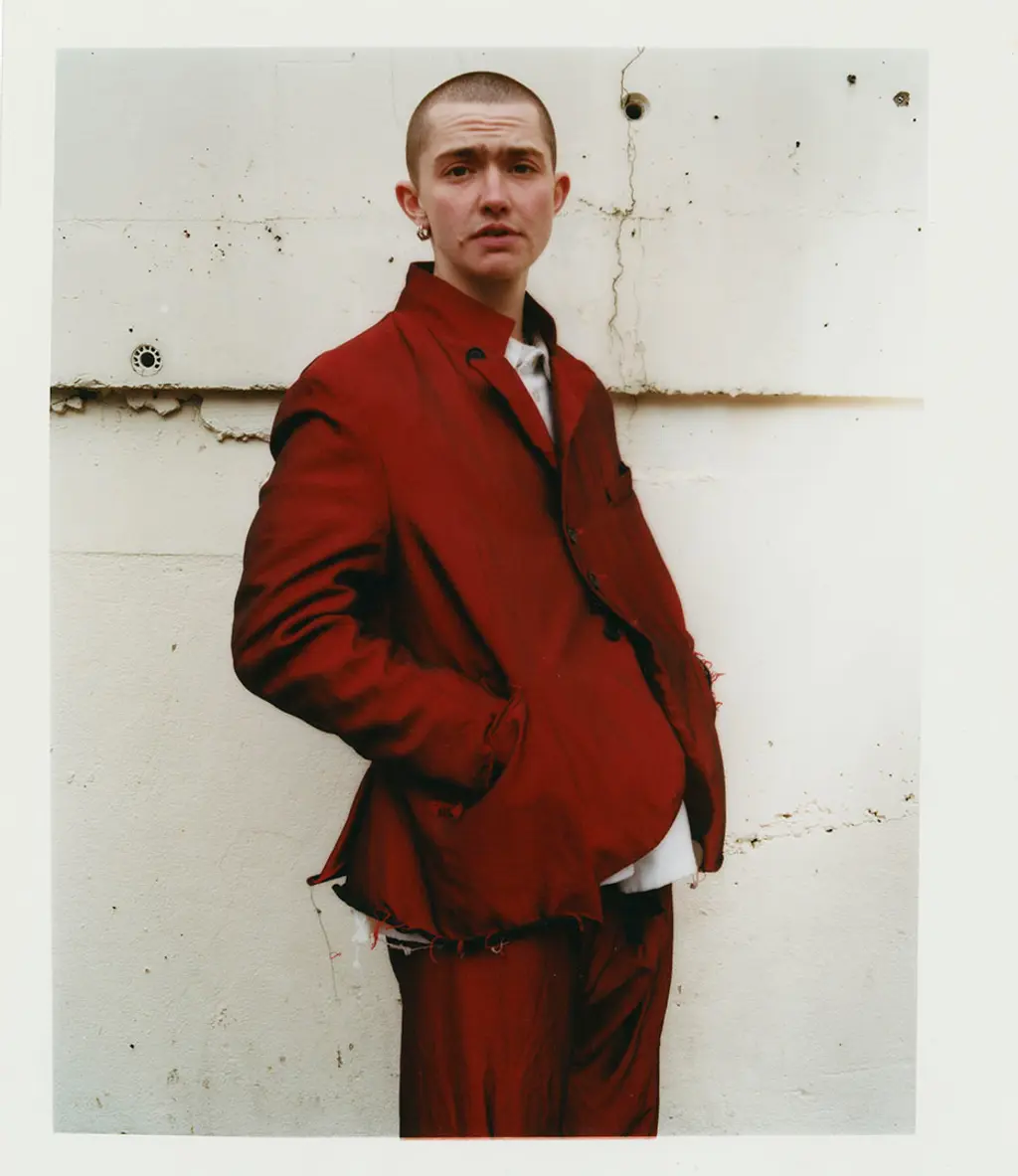
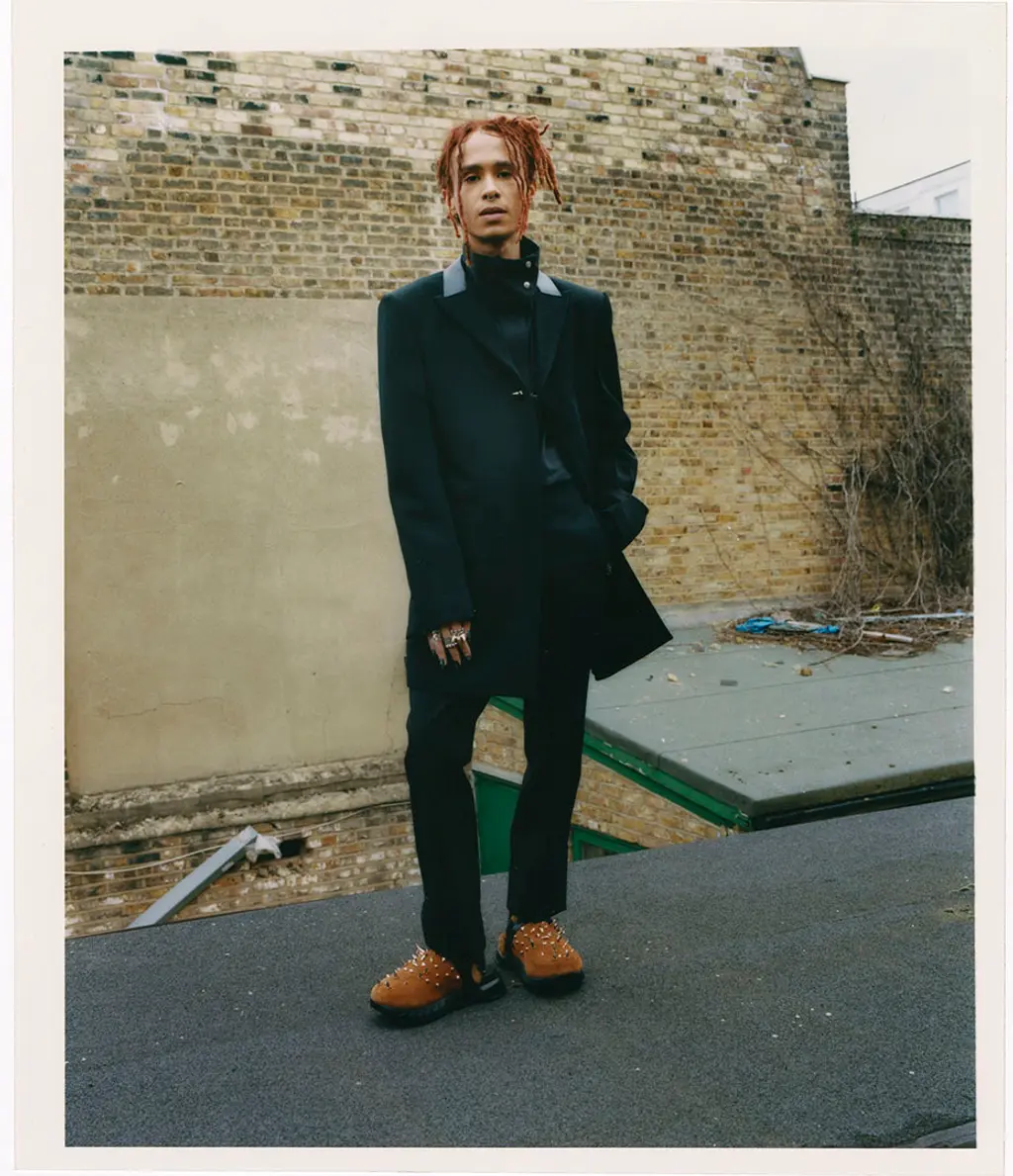
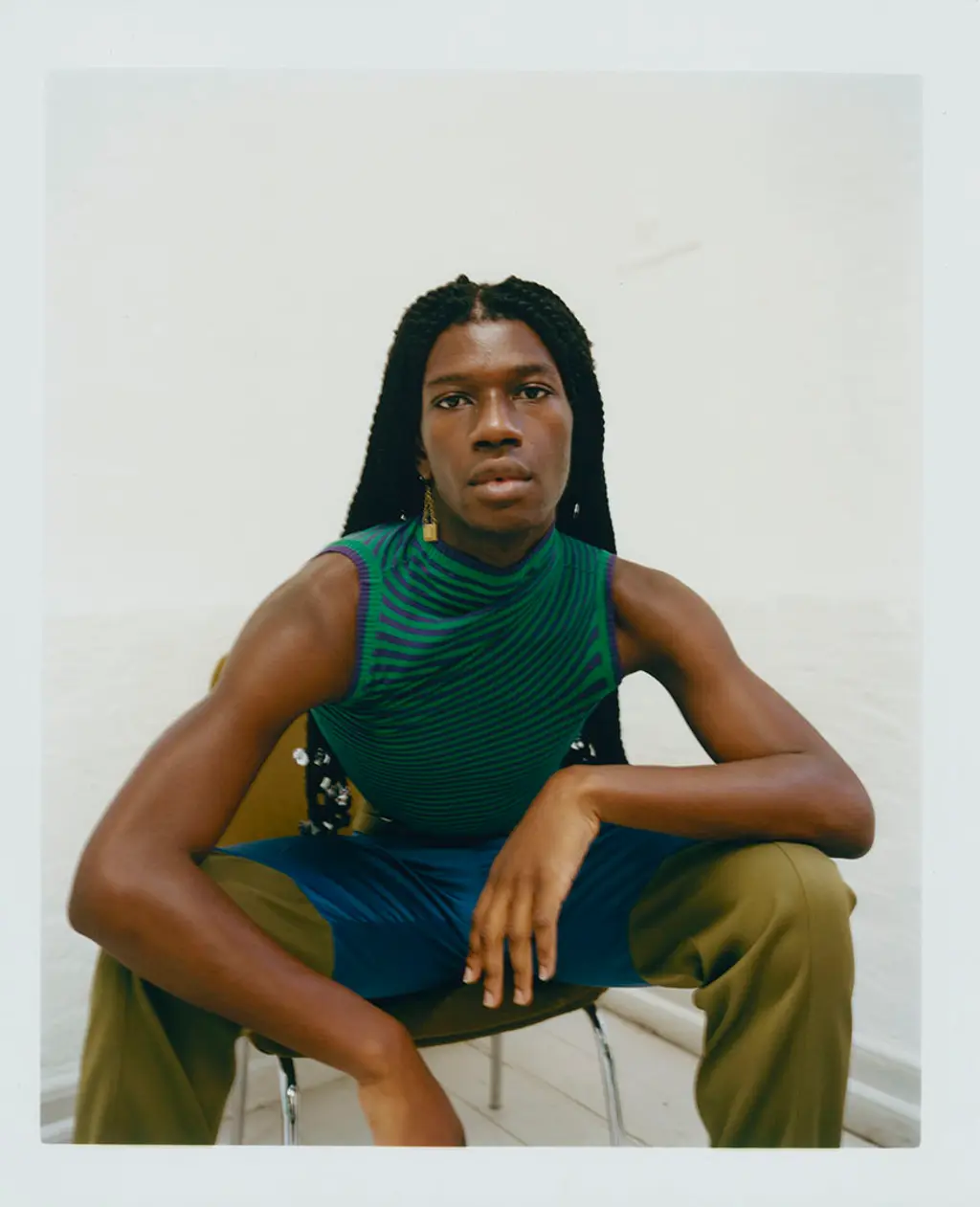
How do you feel that traditional fashion imagery has let down queer and trans people in the past?
Nathan: I often feel like trans and queer issues are treated as a trend rather than an actual issue. People never want to talk about the impact this has on people; the difficulties faced by legislation against them, spiralling surgery costs, and medical systems that fail people.
Jesse: It’s important to mention that trans and queer people have always been innovators, trend-setters, and boundary pushers. Recently there has been a slight shift in more attention on that. Trends are not inherently bad. Fashion trends can have such a big impact that trickles down into culture. It’s nice that credit is more of a discussion currently. However, what is problematic is that queer and trans people will be treated like a tourism destination. Cis male photographers have a habit of trying to represent minority groups with no relationship to them and that’s happening now with queer and trans+ people. It makes the space feel unsafe, emotionally and physically. And then who gets compensated for that type of representation? Not the queer community but the cis male photographer.
How does fashion empower you personally?
Jesse: Fashion allows me to live in my most honest, masculine identity pre-surgery.
Nathan: It allows me to explore facets of myself. Something can be femme, masculine or neither and all are valid forms of expression. Fashion can play a really big part in that.

What item of clothing that you own makes you feel most empowered?
Jesse: My binder.
Nathan: I’m not sure it’s one exact item, but I have lots of fun pieces which are fun to layer and explore. I got this dress recently I started playing with and there’s this Lou Dalton shirt that is so huge and billowing. I love that. I think that anything that has a great silhouette and is bold with loads of character feels empowering to me.
You made sure that everyone involved in this project was comfortable and had conversations with them to ensure this along the way. Can you tell me a bit about how these conversations went? How do you think cis stylists can be more considerate of trans+ models on shoots?
Nathan: It’s so important to have communication before and on shoots. Before even considering clothing, I spoke to everyone and we discussed what affirmed them, also highlighting what was an absolute no. It was a process that really helped inform the styling and ensure we catered to the models and their needs, rather than pushing a vision I might have as a stylist. I think cis stylists just need to communicate, ask what clothing models would like even before they’re on a set, check they feel comfortable and give them opportunities to flag if they don’t feel comfortable. It’s important to reassure trans+ models that they have a voice and don’t have to put their feelings aside for the sake of a photoshoot.
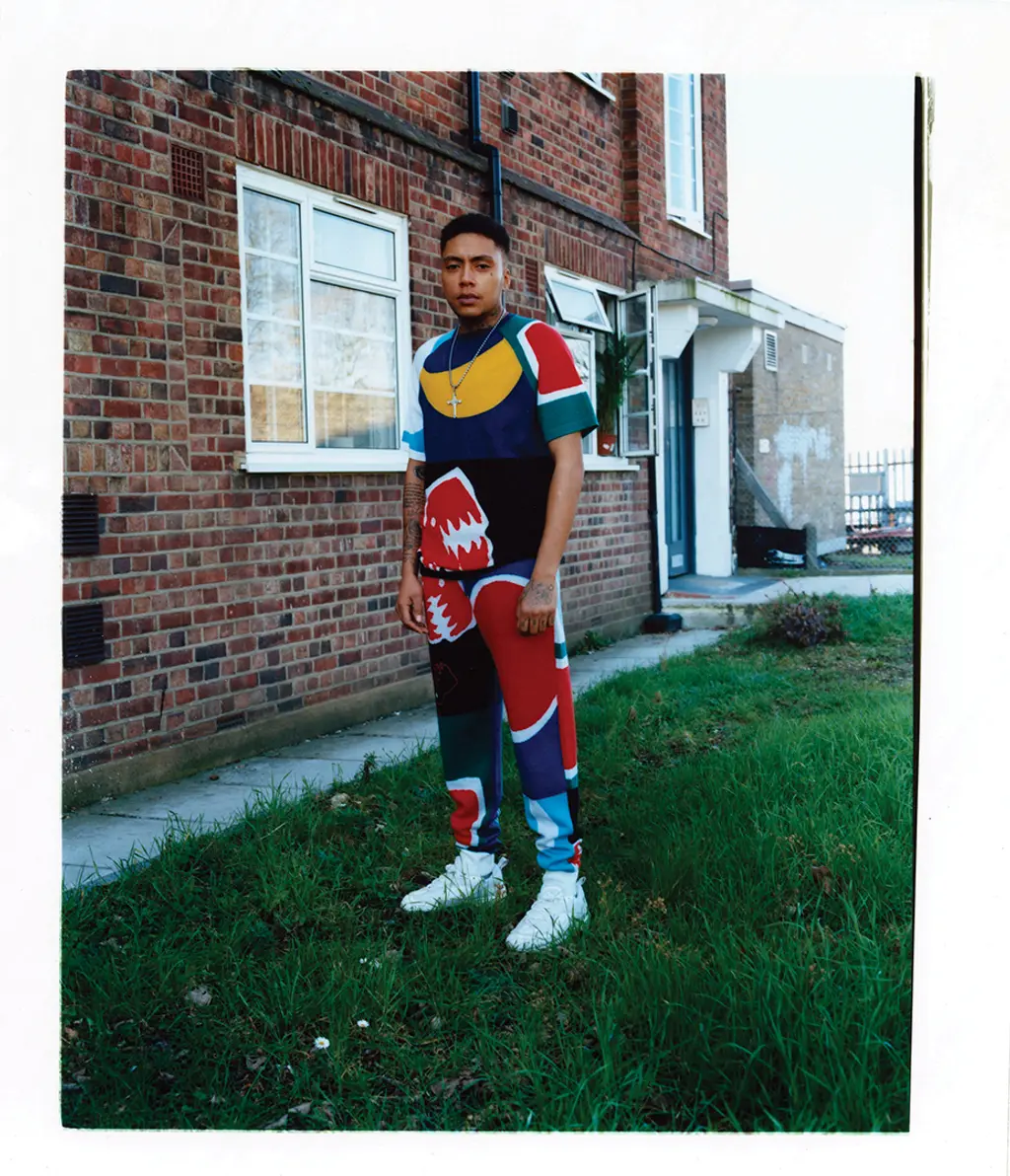
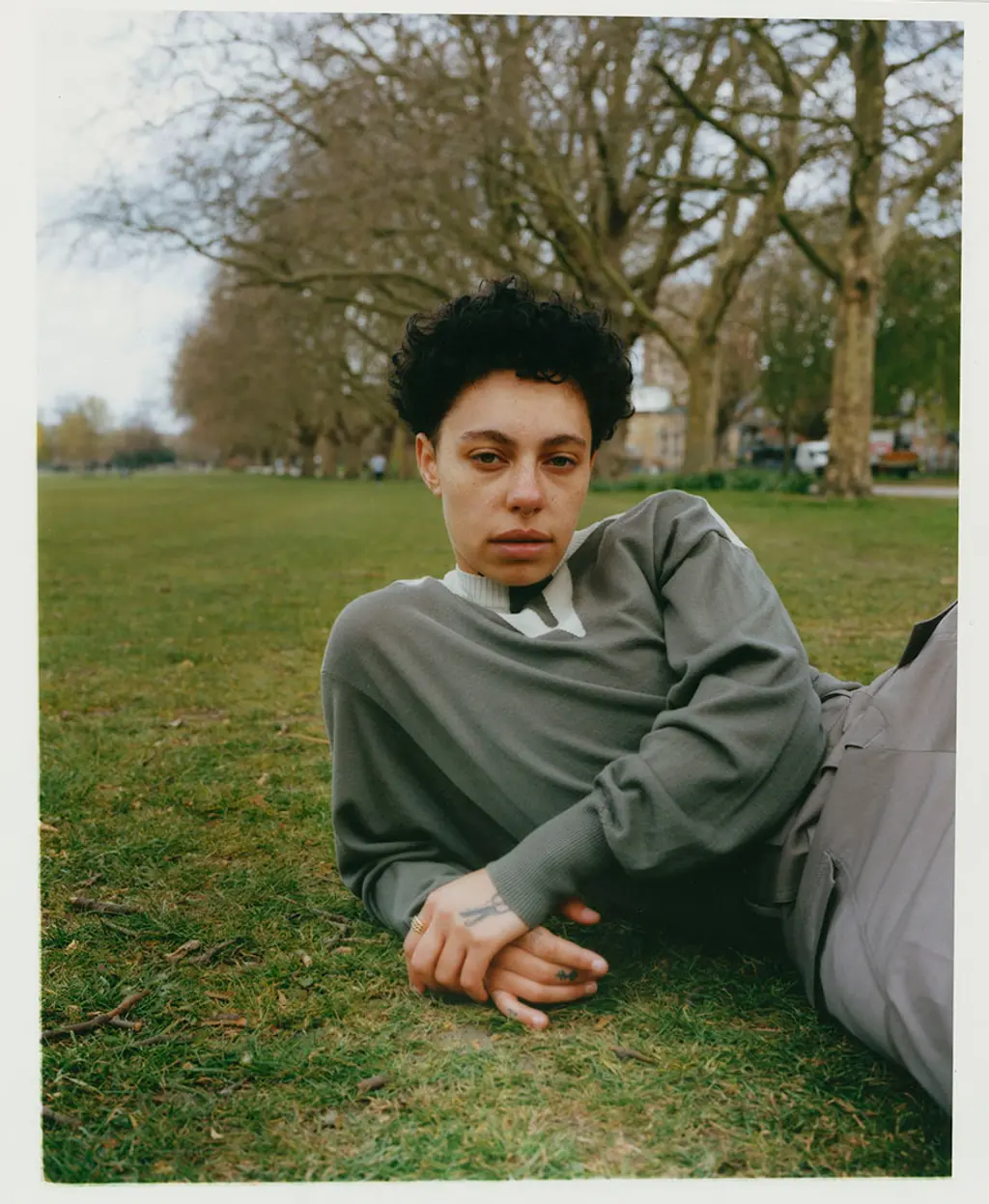
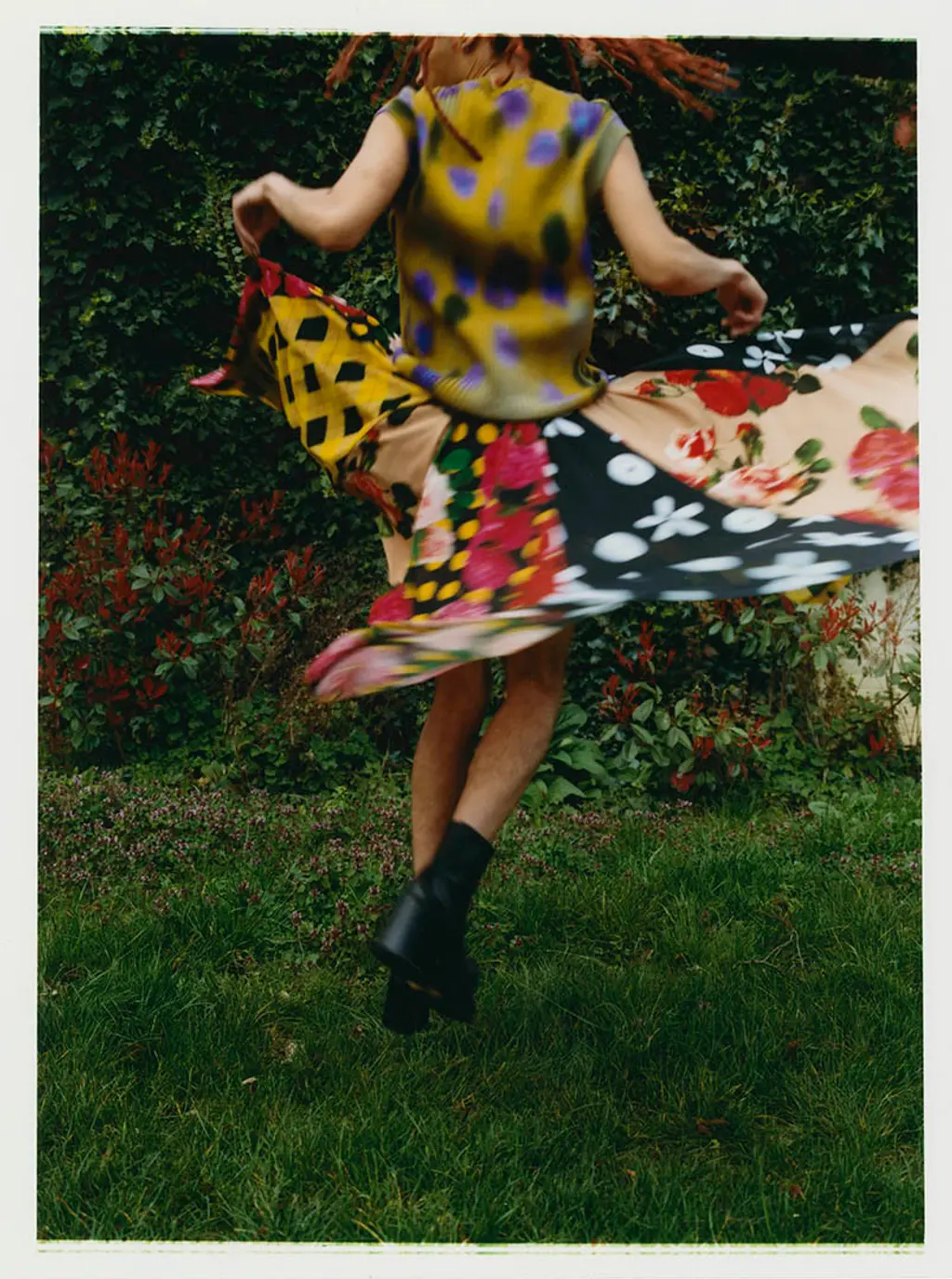
Do you feel like you want to normalise trans and non-binary representation in the fashion industry to the point where it’s not necessarily the focus point of your work? Would you like people to treat your work the way they treat work by cis het creatives?
Jesse: When I’m making this work, representation is an afterthought. I’m making work that aligns with me as an artist and the industry has chosen to label it as representation. Yes, I would like my work to be treated in that way. I’m an artist. I’m not just a queer trans artist. Cis het creatives aren’t pinned down to one thing and I don’t want to be either.
What would you like to see from fashion brands when it comes to collaborating with queer creatives going forwards?
Jesse: Fashion has a massive tendency to focus on working with gay men. I want to see more trans people getting those jobs, more POC queers, and more dykes. They should analyse who we keep seeing hired and then change that.
Nathan: I’d love to see brands donate to charities and actually attempt to create some change with these queer people they’re working with rather than a quick moment in the spotlight. I’d also love to see brands using more trans+ and queer teams, reflecting their inclusivity behind a camera as well as in front of one. Also, a greater effort to understand trans+ and queer creatives, people taking some initiative to listen and educate themselves and companies.
Tender is available to order here. All profits from the zine will go directly to trans+ led organisations and GoFundMe’s










